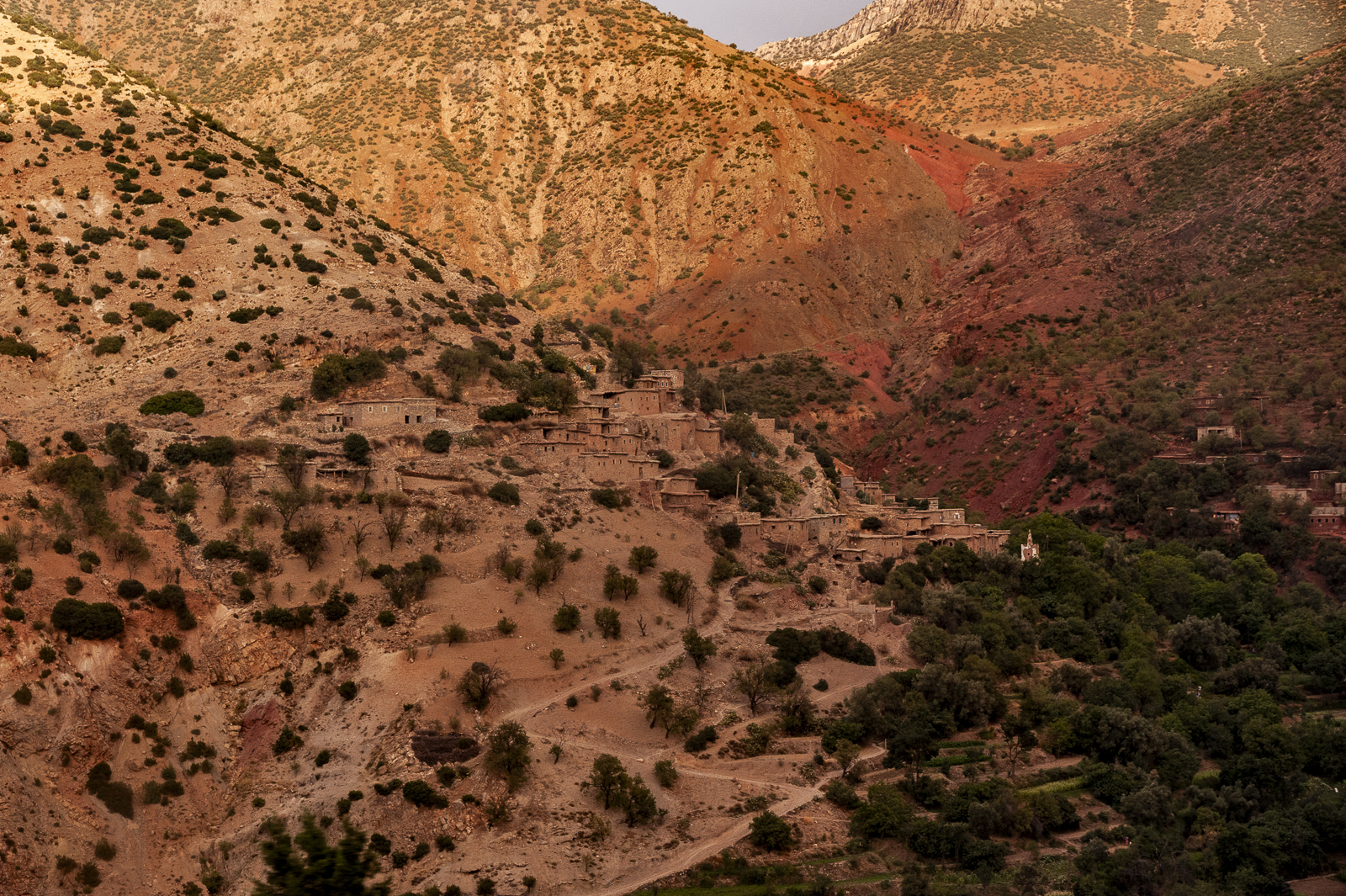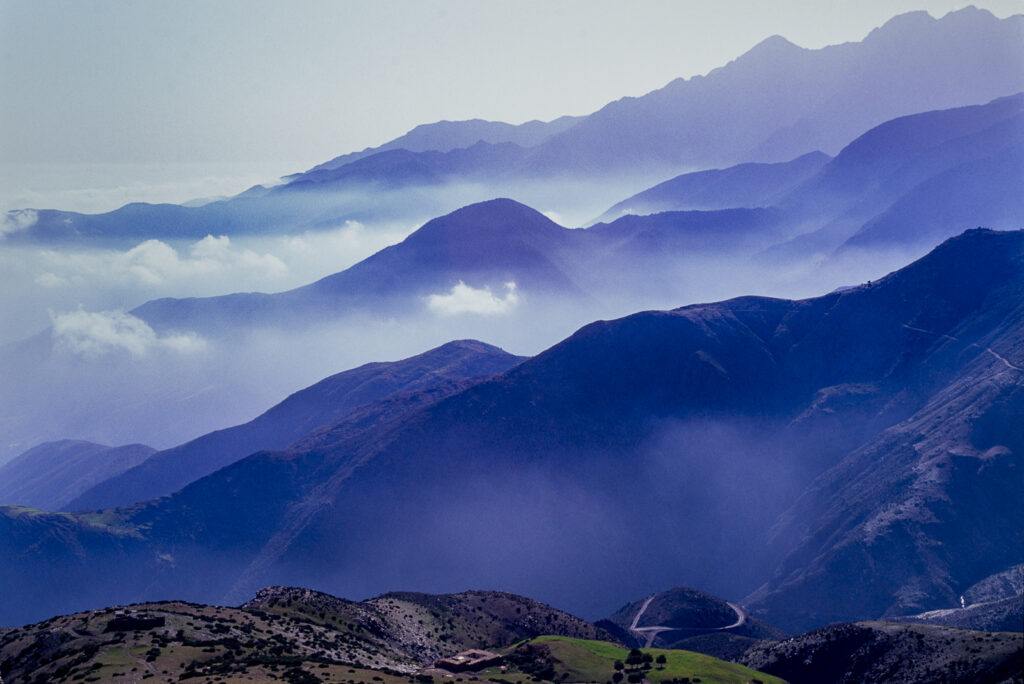
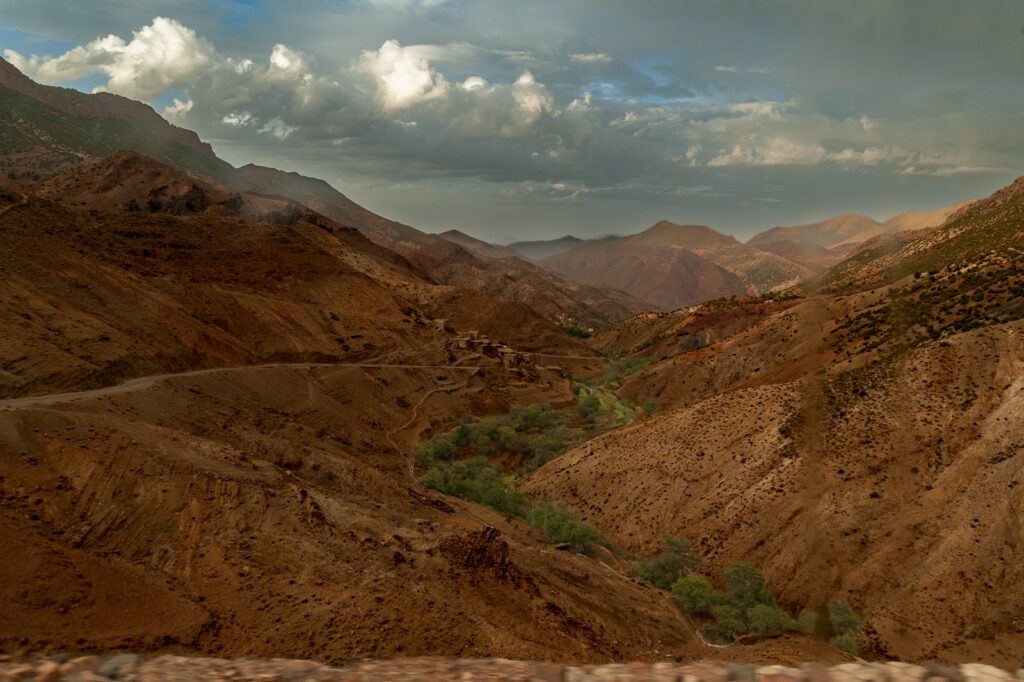
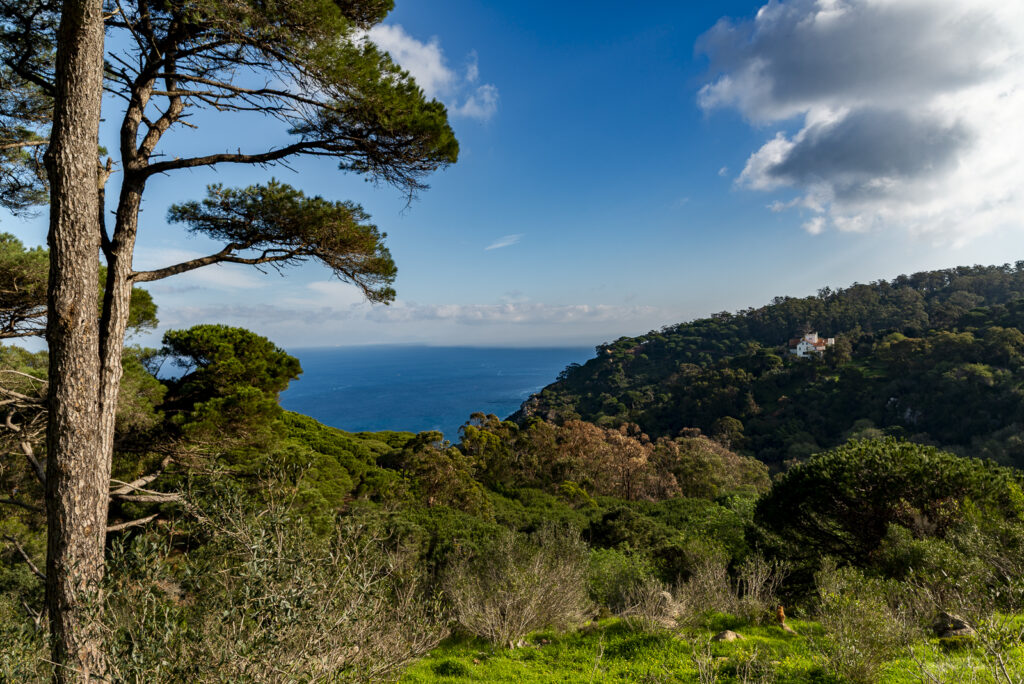
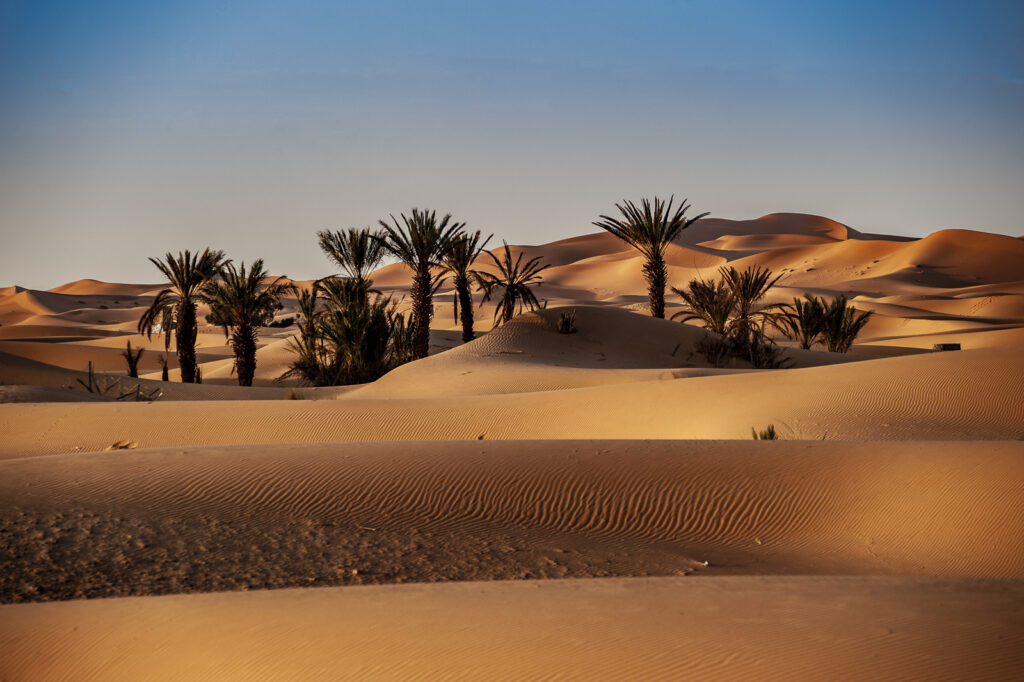
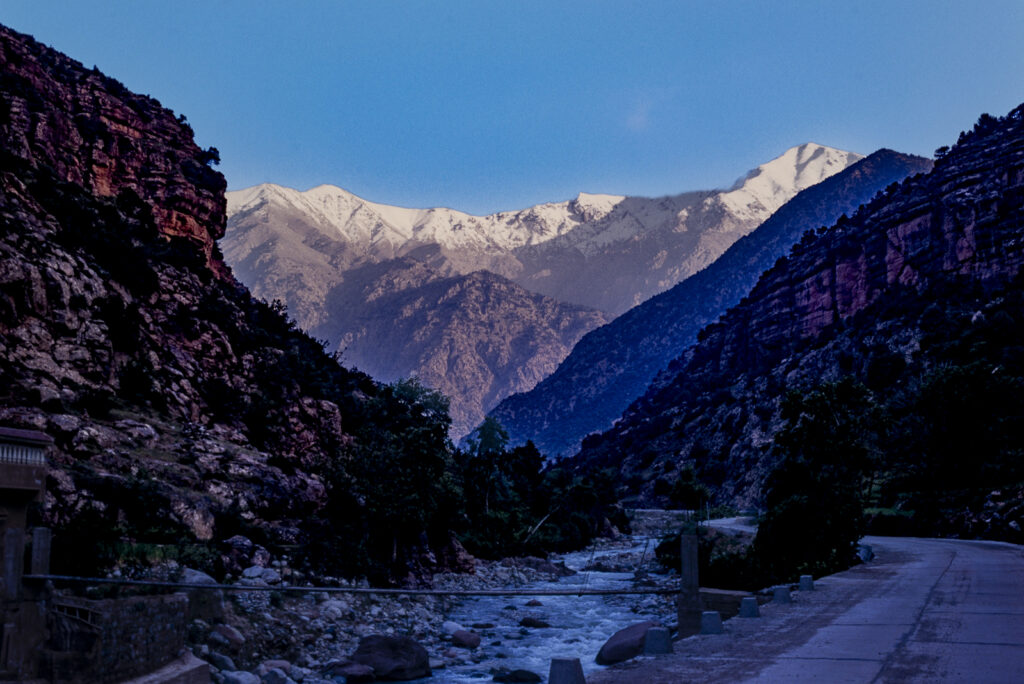
Mediterranean in the north, Saharan from the south to the east, mountainous and plateau-like in the north-east, Morocco is bordered by an extensive Atlantic coastline all along its western flank. Within the country, the steep, high, complex Atlas Mountains are home to a rich composition of elements, combined with diverse climates typical of latitudes somewhere between tropical and warm temperate. The landscapes range from very cold to very hot, and from extremely arid and dry to quite humid.
The enormous differences in elevation and the varied rocky terrain, combined with different orientations, allow for numerous geographical responses in a vast country that is simultaneously very maritime and very terrestrial. Plains and alluvial lowlands and midlands, coastal and inland; salt depressions; mountain ranges, valleys, and plateaus, both montane and submontane, with canyons, gorges, and ravines; river corridors; long mountain ridges, elevated, prominent peaks and summits, some snow-capped, comprise a set of orographic ensembles with prominent features and rich panoramic views, and small, even tiny sheltered and almost entirely hidden enclaves worthy of travelling adventures that allow us to discover details and nourish experiences. Flora and vegetation envelop this physical underpinning with abundant environmental responses ranging from typically oceanic or Mediterranean formations, with dense, pure or mixed, relict or moulded forests (firs, cedars, pines, oaks, holm oaks, etc.), to arid and desert-like landscapes with sandy deserts, grassy, shrubby or wooded steppes (acacias, argan trees, and environment-specific plants) alternating with centuries-old agricultural lands, including cereal fields, olive groves, vineyards, fruit orchards and vegetable gardens.
Juan Javier García-Abad Alonso
University of Alcalá







